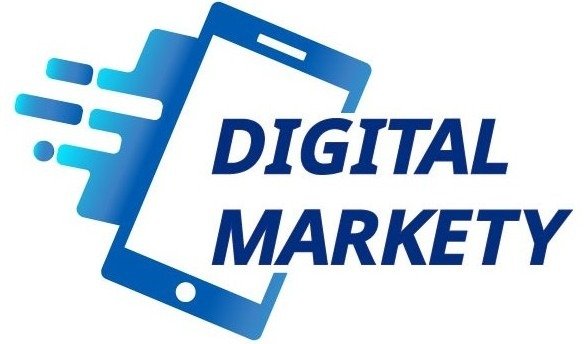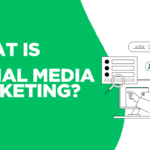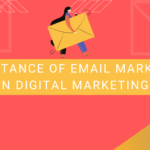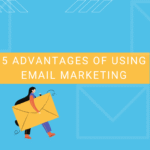
Importance of email marketing in digital marketing
Introduction to Email Marketing
Email marketing is a powerful digital marketing strategy that involves sending emails to a targeted audience with the intention of promoting products, services, or engaging customers. It is a direct form of communication that allows businesses to reach their audience on a personal level, presenting opportunities to foster relationships, build brand loyalty, and drive conversions. In the contemporary digital marketing landscape, email marketing plays a pivotal role in establishing effective communication channels between brands and consumers.
Table Of Content
Additionally, email marketing serves as a vital component of a comprehensive marketing strategy, integrating seamlessly with other digital marketing efforts such as social media marketing and content marketing. For instance, businesses can utilize email campaigns to promote content shared on social media platforms or to drive traffic to blogs, websites, or landing pages. This coordinated approach not only amplifies the reach of marketing efforts but also ensures consistent messaging across different channels.
As brands navigate the complexities of digital marketing, it becomes increasingly important to leverage the unique advantages of email marketing. By utilizing advanced segmentation strategies, businesses can tailor their messages to specific audience segments, providing relevant content that resonates with each group. This level of personalization is what distinguishes email marketing from other channels, making it an indispensable element of any modern marketing strategy.
The Evolution of Email Marketing
Email marketing has a rich and dynamic history that dates back to the early days of the internet. The inception of this marketing channel can be traced to 1971 when Ray Tomlinson, a computer engineer, sent the first email across a network. It was a revolutionary moment that laid the groundwork for how businesses would later communicate with customers. As the internet evolved, so too did email, transitioning from a simple text-based communication tool to a sophisticated platform capable of delivering targeted marketing messages.
By the late 1990s, businesses began to recognize the potential of email as a marketing medium. The increasing number of internet users and the rise of e-commerce spurred the development of email marketing strategies. Companies started utilizing email to send newsletters, promotions, and product announcements to a growing audience. During this period, many organizations began to incorporate segmentation and personalization in their email campaigns, significantly enhancing engagement rates and improving the relevance of their communications.
Technological advancements played a crucial role in the evolution of email marketing. The introduction of email service providers (ESPs) in the early 2000s marked a significant milestone, as these platforms facilitated the creation, distribution, and analysis of email campaigns. By offering user-friendly interfaces, template designs, and analytics, these services democratized email marketing, making it accessible to businesses of all sizes. Additionally, legislation around email marketing, such as the CAN-SPAM Act of 2003, required marketers to adopt more ethical practices, further shaping the landscape of email communication.
In more recent years, advancements in automation and artificial intelligence have transformed the email marketing landscape yet again. Marketers can now create highly personalized content, automate follow-up sequences, and analyze user behavior in real time. As a result, email marketing has become more efficient and effective, allowing businesses to foster deeper relationships with their customers.
Benefits of Email Marketing
Email marketing has emerged as a pivotal tool within the broader scope of digital marketing, presenting several advantages that can significantly enhance a brand’s outreach and customer engagement. One of the most noteworthy benefits is its high return on investment (ROI). According to a report by the Data and Marketing Association, for every dollar spent on email marketing, the average return can be as much as $42. This makes email marketing one of the most cost-effective marketing strategies available to businesses today.
Another distinct advantage of email marketing lies in its ability to facilitate targeted communication. Unlike traditional marketing methods, which often disseminate messages to a wide audience, email marketing enables brands to segment their audiences based on specific demographics, behaviors, and preferences. This targeted approach increases the likelihood of engagement, as messages resonate more with recipients when they are tailored to their interests. In fact, studies reveal that segmented campaigns can drive a 760% increase in revenue.
Furthermore, personalized marketing is a cornerstone of successful email campaigns. Tailoring content to individual preferences can vastly improve customer experience and satisfaction. Research indicates that personalized emails can lead to six times higher transaction rates, underscoring the importance of customization in modern marketing strategies. Personalized subject lines, product recommendations, and tailored content contribute to a more engaging customer interaction.
Email marketing also fosters effective audience engagement. Unlike social media, where the life span of a post is fleeting, emails allow brands to maintain continuous communication with their audience. Regular newsletters, updates, and promotions keep customers informed and involved, fostering brand loyalty. Additionally, with the ability to track open rates and click-through rates, marketers can measure engagement effectively, adapting strategies in real-time to optimize results.
Building an Email List
Building a robust email list is a pivotal aspect of effective email marketing in digital marketing strategies. A well-constructed list not only enhances communication with your audience but also bolsters engagement and conversion rates. One of the most effective methods of gathering email addresses is through opt-in forms strategically placed on your website or social media platforms. These forms should clearly outline the benefits of subscribing, ensuring potential subscribers are aware of what they will receive, such as newsletters, promotional offers, or exclusive content.
Another effective tactic involves the use of lead magnets. Lead magnets are incentives offered in exchange for email addresses, such as eBooks, free trials, or discount codes. This approach not only encourages sign-ups but also nurtures initial engagement with your audience. It is essential to ensure that these lead magnets align with the interests of your target demographic, thereby increasing the likelihood of a successful subscription.
Segmentation plays a crucial role in managing your email list. By categorizing your subscribers based on their preferences, behaviors, or demographics, you can tailor your email campaigns to meet the specific needs of different audience segments. This personalized approach significantly increases the chances of higher open and click-through rates, as subscribers receive content that resonates with their interests.
Additionally, list management should adhere to best practices to ensure compliance with regulations such as the General Data Protection Regulation (GDPR) and the CAN-SPAM Act. Obtaining explicit consent for email communications and providing an easy opt-out mechanism are fundamental to maintaining trust and engagement with your audience. Regularly cleaning your email list by removing inactive subscribers can also enhance overall deliverability and engagement rates, ensuring your email marketing remains effective and compliant.
Creating Effective Email Campaigns
Email marketing remains a critical component of digital marketing strategies, primarily due to its ability to engage audiences effectively. Crafting a successful email campaign involves several essential components, chiefly focusing on subject lines, content, design, and calls to action (CTAs). Each element plays an integral role in enhancing both open rates and click-through rates, ultimately driving conversions.
Starting with subject lines, these are the first impression recipients have of an email and therefore must be captivating. Employing a concise yet intriguing subject line can significantly increase the likelihood of an email being opened. Additionally, personalization can greatly impact open rates; utilizing the recipient’s name or other individualized elements can render subject lines more appealing. It is also advisable to incorporate urgency by suggesting limited time offers or exclusive content.
As the content is the core of an email campaign, it is imperative to maintain a balance between brevity and informativeness. Use clear, engaging language that speaks to the recipient’s needs and interests. Providing valuable content—be it promotion, education, or entertainment—will foster greater engagement. Employing storytelling techniques can also resonate well with audiences, making the emails both enjoyable and memorable.
Design elements should not be overlooked. A visually appealing layout and mobile-friendly format are crucial, considering that many users access their emails on mobile devices. Employing clear headings, bullet points, and images can enhance readability while ensuring the message remains straightforward and navigable.
Finally, an effective email campaign must feature strong CTAs. These should be clearly stated, compelling, and easy to locate within the email. Phrasing such as “Shop Now,” “Learn More,” or “Get Started” can drive users towards desired actions with higher efficacy. Overall, a well-rounded email campaign that emphasizes these components can significantly bolster engagement metrics within digital marketing efforts.
Automation in Email Marketing
Email marketing has evolved significantly over the years, and one of the most transformational developments is the advent of automation. Automation in email marketing refers to the use of technology and software tools to execute marketing campaigns with minimal human intervention. This approach enables marketers to create tailored experiences for their audience through timely and relevant communications.
One of the primary advantages of automation is the ability to streamline email campaigns. Marketers can set up automated workflows that trigger specific emails based on user behavior or predefined schedules. For instance, businesses can automatically send welcome emails to new subscribers or follow-up messages to leads who showed interest in a product but did not complete their purchase. This ensures that communication is not only timely but also contextually relevant, greatly improving the chances of engagement.
Additionally, automation tools enhance overall efficiency. Marketers can save valuable time by reducing the need for manual inputs and repetitive tasks. This allows teams to focus on strategy development and creative aspects of their campaigns rather than getting bogged down by the logistical details. Furthermore, automation can help in segmenting email lists more effectively, ensuring that the right messages reach the right audiences, which can lead to higher conversion rates.
Moreover, timely communication is a hallmark of effective email marketing. Automation allows marketers to maintain a consistent communication flow with customers without overwhelming them. By scheduling emails to be sent at optimal times based on user engagement data, marketers can ensure their content is not only seen but also acted upon. As a result, businesses can foster better relationships with their audience while driving conversions smoothly.
In summary, email marketing automation stands out as a vital component that enhances campaign efficiency, improves user engagement, and fosters meaningful interactions between brands and customers.
Measuring Email Marketing Success
Understanding the effectiveness of email marketing campaigns is crucial for any digital marketing strategy. To achieve this, marketers utilize various key performance indicators (KPIs) and metrics that provide insights into engagement, conversion, and overall campaign success. Some of the primary KPIs include open rates, click-through rates (CTR), conversion rates, bounce rates, and unsubscribe rates. These metrics are instrumental in assessing how well an email resonates with its intended audience and can guide future content and strategy adjustments.
Open rates serve as an initial indicator of campaign effectiveness, highlighting the percentage of recipients who opened the email. A strong open rate may suggest that the subject line was compelling, emphasizing the importance of crafting engaging and relevant subject lines. Following this, click-through rates measure the percentage of readers who clicked on one or more links within the email, reflecting the quality of the content and the call to action. A high click-through rate can correlate with successful audience engagement, making it a vital metric for evaluation.
Conversion rates track the percentage of recipients who completed a desired action, such as purchasing a product or signing up for a service, following interaction with the email. This metric provides a direct link between email marketing efforts and business outcomes. Conversely, bounce rates and unsubscribe rates help identify potential issues with email lists and content, indicating when recipients are disengaging.
To effectively monitor these metrics, marketers can utilize various tools and techniques. Email marketing platforms often feature built-in analytics for tracking KPIs, allowing for real-time monitoring and adjustments. Additionally, employing A/B testing can provide valuable insights into how different subject lines, content formats, or sending times affect performance. By continuously analyzing these data points, marketers can refine their email strategies, ultimately enhancing the overall impact and effectiveness of their campaigns.
Challenges in Email Marketing
Email marketing is a powerful tool within the digital marketing landscape, yet marketers often confront several challenges that can hinder the effectiveness of their campaigns. One of the most significant issues is deliverability. This refers to the ability of an email to successfully reach the intended recipient’s inbox. Factors affecting deliverability include poor sender reputation, unverified email addresses, and the use of spam-triggering words. To overcome this challenge, marketers should maintain a clean email list by regularly updating and verifying email addresses. Additionally, employing authentication methods such as SPF, DKIM, and DMARC can greatly enhance the likelihood of emails being delivered successfully.
Another formidable challenge in email marketing is compliance with spam regulations. Laws such as the CAN-SPAM Act in the United States and the General Data Protection Regulation (GDPR) in Europe impose strict rules regarding how businesses can communicate with customers. Marketers must ensure that consent is obtained from subscribers before sending promotional emails, and they should provide clear options for opting out of future communications. Failure to comply with these regulations can result in hefty fines and damage to brand reputation.
Furthermore, engagement rates can also pose a challenge. Marketers often notice a decline in open rates, click-through rates, and overall engagement over time. This can be attributed to subscriber fatigue, lack of relevant content, or an oversaturation of promotional emails. To mitigate this issue, it is essential to segment email lists based on user behavior and preferences. Personalized content tailored to the individual subscriber can significantly improve engagement rates. A/B testing subject lines and content can also offer valuable insights into what resonates best with the target audience, allowing for more effective campaigns in the future.
Future Trends in Email Marketing
Email marketing continues to evolve, influenced by technological advancements and changing consumer preferences. As businesses navigate the digital landscape, several key trends are emerging that are set to shape the future of email marketing. One of the most significant trends is the integration of artificial intelligence (AI) to enhance personalization. AI-driven algorithms are increasingly enabling marketers to analyze consumer behavior and preferences, resulting in highly tailored email content that resonates with individual recipients. This level of customization not only improves engagement rates but also enhances customer loyalty, making it a vital focus for companies aiming for sustained success in their email marketing campaigns.
Another noteworthy trend is the rise of interactive emails. Unlike traditional emails that primarily served as static digital advertisements, interactive emails allow recipients to engage with content directly. This can include elements such as surveys, carousels, and embedded videos, offering a richer and more engaging experience. Such interactivity not only captivates the audience but also encourages higher conversion rates, as users are more inclined to act when they can interact with the content seamlessly within their inbox.
Moreover, the integration of social media with email marketing is gaining prominence. Brands are increasingly using email campaigns to drive traffic to their social platforms and vice versa. By incorporating social sharing buttons and encouraging recipients to follow the brand on social media, marketers can create a more cohesive ecosystem that amplifies brand presence across multiple channels. This strategy not only broadens their reach but also enhances customer engagement through diverse interaction points.
As these trends take shape, businesses must adapt to remain competitive. Embracing AI technology for a personalized approach, leveraging interactive elements for engagement, and fostering integration between email and social media will be crucial in shaping future email marketing strategies.





The checklist at the end was a nice touch. Makes it easy to apply.